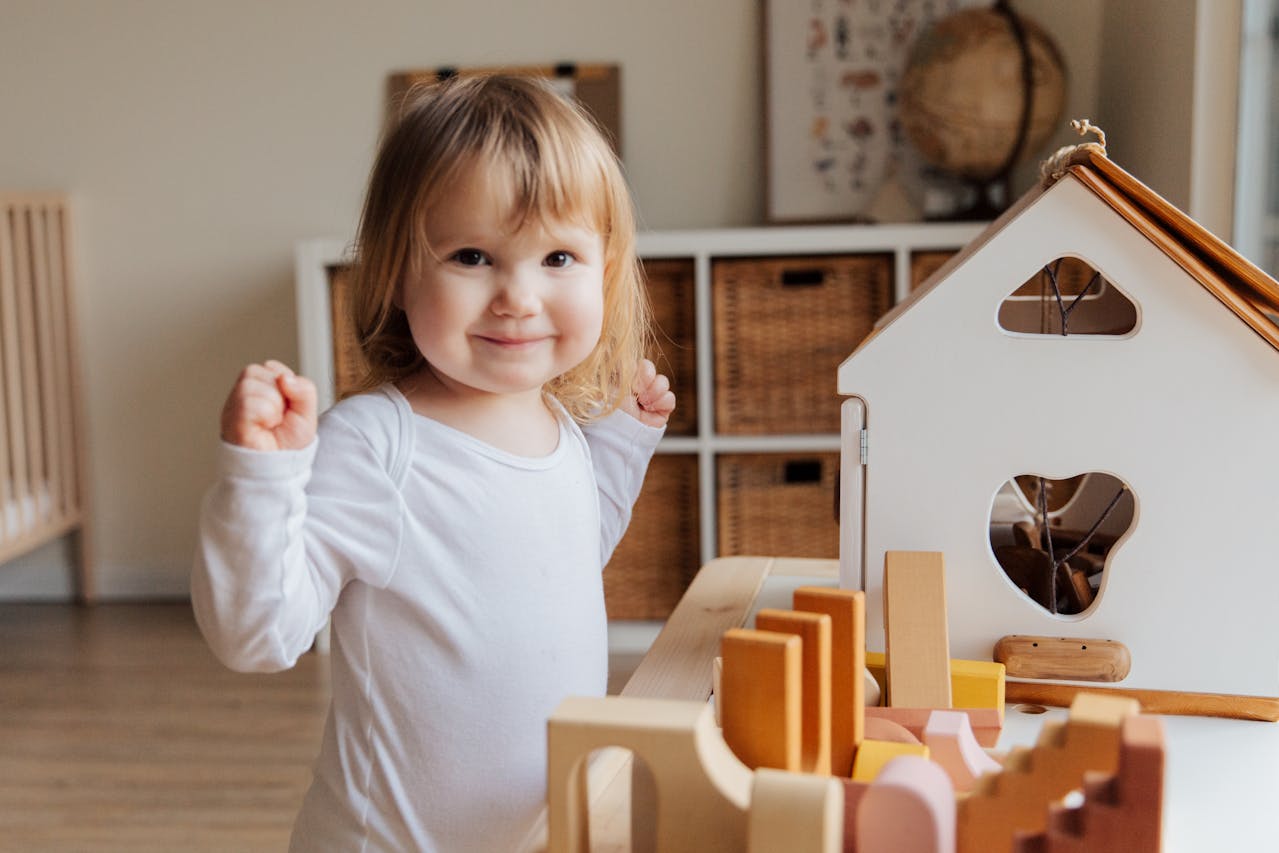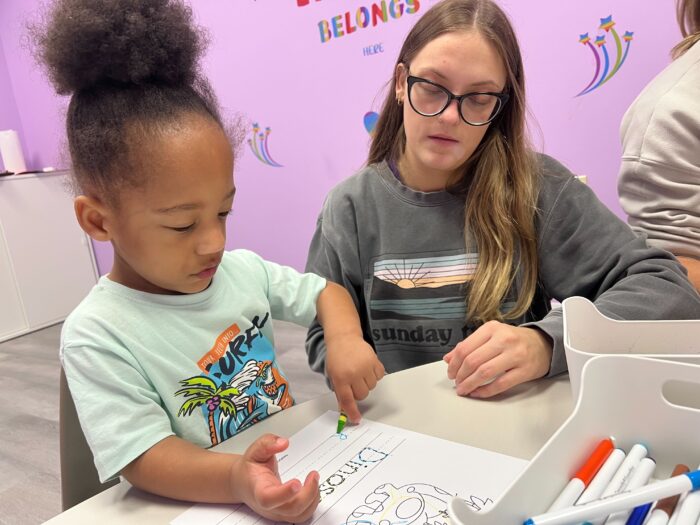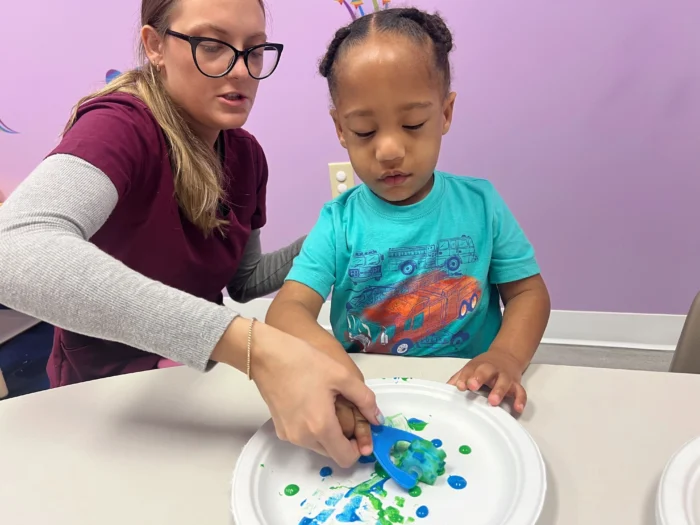
Supporting a child with autism means finding paths that lead to happy growth. At Abacus Therapies, we’ve seen how Applied Behavior Analysis (ABA) can help children develop skills in ways that feel natural to them.
Let’s explore eight essential ABA techniques that can support your child’s unique journey.
Overview of ABA Therapy Techniques
Modern ABA therapy uses a variety of approaches to help children thrive. The most effective techniques focus on developing:
- Social skills
- Learning abilities
- Memory
- Focus
Every child is unique, which is why we believe in finding the right combination of techniques that work best for their individual needs and interests.
1. Positive Reinforcement
At the heart of ABA therapy is positive reinforcement – celebrating and encouraging your child as they grow.
This approach uses what naturally motivates your child, whether it’s praise, a favorite activity, or extra playtime, to make learning feel rewarding and fun.
For example, after your child shares their toys with a sibling, a warm hug and genuine praise like “Sharing like that is so kind!” help them understand the positive impact of their actions and is likely to motivate them to share more often.
2. Early Start Denver Model (ESDM)
The Early Start Denver Model is a gentle, playful approach designed especially for toddlers and preschoolers with autism. What makes ESDM special is how it weaves learning opportunities into fun, engaging activities that help develop cognitive, language, and social skills.
ESDM is grounded in the principles of ABA therapy techniques but delivered through joyful and engaging play.
Try this at home: during a simple game of rolling a ball back and forth, say “My turn” when it’s your turn, and encourage your child to do the same. This joyful play naturally teaches sharing, turn-taking, and communication.
3. Discrete Trial Training (DTT)
DTT helps make learning more manageable by breaking down complex tasks into smaller, easier steps. It’s particularly helpful for teaching daily activities like handwashing or getting dressed in the morning.
For example, when teaching handwashing, we might break it down into simple steps:
- Turning on the water
- Applying soap
- Rubbing hands
- Rinsing
Achieving each step builds confidence, and before you know it, your child has mastered the whole task!
You can also try DTT by making the bed in the morning. Smaller steps, such as straightening the sheets, fluffing the pillows, and arranging their stuffed animals, can be part of your routine. When a skill is learned effectively, you’ll see progress within 8–10 teaching sessions.
4. Modeling
Visual modeling is perfect for children who learn best by watching and doing. Instead of just explaining how to do something, we show them – making learning more natural and engaging. This approach works especially well for teaching new skills.
For instance, during cleanup time, we might say, “Let’s clean up together. Watch how I put the toys away,” and demonstrate the action. Children often naturally begin to follow along, so you’re encouraging your child to mimic your actions.
During meals, a therapist might demonstrate how to use utensils and say “please” and “thank you”.
In social settings, like playdates, both you and the therapist can model sharing and playing with other children. Your child sees these examples and is encouraged to replicate the behaviors with their peers.
5. Natural Environment Teaching (NET)
We love using NET because it turns everyday moments into learning opportunities. By teaching skills in real-world settings through activities your child already enjoys, learning becomes part of their natural routine.
For instance, a lesson on numbers and quantities can happen while baking cookies together, where your child can help measure ingredients for the recipe. These real-life experiences help to develop skills they can use right away in their daily life.
6. Antecedent-Based Interventions (ABI)
ABA antecedent-based interventions approach is all about creating an environment where your child can thrive. By understanding what might cause them discomfort, we can make simple changes to help your child feel more comfortable and confident.
For example, if bright lights make your child uneasy during reading time, we might dim the lights or find a cozy corner with natural light. These small changes can make a big difference in helping your child engage more comfortably with activities they enjoy. Also, they’re good ABA techniques for overcoming tantrums.
7. Picture Exchange Communication System (PECS)
PECS opens up new ways for children to express themselves, especially when words are challenging. Using pictures to communicate wants and needs can reduce frustration and build confidence in self-expression.
Think of it like this: your child might use a card to select toys or games, like one with a picture of building blocks to show they want to build something. This way, they can communicate their choice without needing to verbalize it.
8. Pivotal Response Treatment (PRT)
PRT focuses on developing core skills and helping children become more independent and confident in their daily lives. Among the many types of ABA interventions, It’s particularly effective in developing social skills for kids with autism.
You can apply PRT by encouraging the child to share their emotions. We help them learn to express their feelings – whether it’s happiness, frustration, or excitement, share their preferences or dislikes, ask to join group activities, problem-solve during play, or share personal experiences.
The Importance of Exercise
Moving and playing isn’t just fun – it’s an important part of ABA therapy. Incorporating physical activity into sessions is great for your child’s overall well-being.
Through play and physical activities, we introduce helpful ABA techniques for autism, like chaining, where we help your child connect different skills they’ve learned into a complete activity. While DTT helps master individual skills, chaining brings these skills together in a natural way that makes sense for your child’s daily routines.
For instance, a trip to the park can become an adventure in learning: getting dressed, choosing a ball from the garage, leading the way to the park, and so on. Each step is a chance to practice different skills while having fun.
ABA Therapy Techniques at Home
Your home is the best place to support your child’s growth. Here are some tips to help you incorporate ABA techniques into your daily routines:
- Stay consistent with the approaches your therapist uses
- Remember that they should feel supported every step of the way
- Keep in regular contact with your ABA therapist about what they enjoy the most
- Start with clear guidance for new tasks, then gradually step back as your child gains confidence
Final Thoughts
Every child’s journey is unique, and what works beautifully for one child might not for another. At Abacus Therapies, we create personalized programs that center around your child’s interests and strengths.
We’re excited to offer ABA services both at home and in school settings, and we’re thrilled to announce we’ll soon be opening our first ABA center in Charlotte, NC, where we’ll also provide group therapy options.
To help families better support their children, we offer ABA therapy training for parents at all our locations. Our experienced team of BCBAs is here to help you learn which techniques work best for your child and how to implement them.
Ready to learn more about how ABA can help your child? We’d love to talk with you. Schedule a free ABA consultation via call, text, or email, and let’s discuss how we can support your child’s unique journey.
FAQs
What are the techniques of ABA?
ABA therapy uses a variety of research-backed techniques that help children develop communication and social skills. These include positive reinforcement, Discrete Trial Training, Pivotal Response Training, and Natural Environment Teaching – all of which can be tailored to your child’s unique needs and interests.
If you’re new to ABA and want to understand more about how it works, we’re happy to help. You can reach out to our center near you, and our team will walk you through how ABA can support your child in a way that feels natural and engaging.
What are the two main teaching methods of ABA?
The two primary teaching approaches we use in ABA therapy are:
- Discrete Trial Training (DTT): This breaks down learning into clear, manageable steps, making it easier for children to master new tasks one piece at a time.
- Natural Environment Teaching (NET): This emphasizes learning through natural play and interactions within everyday settings.



